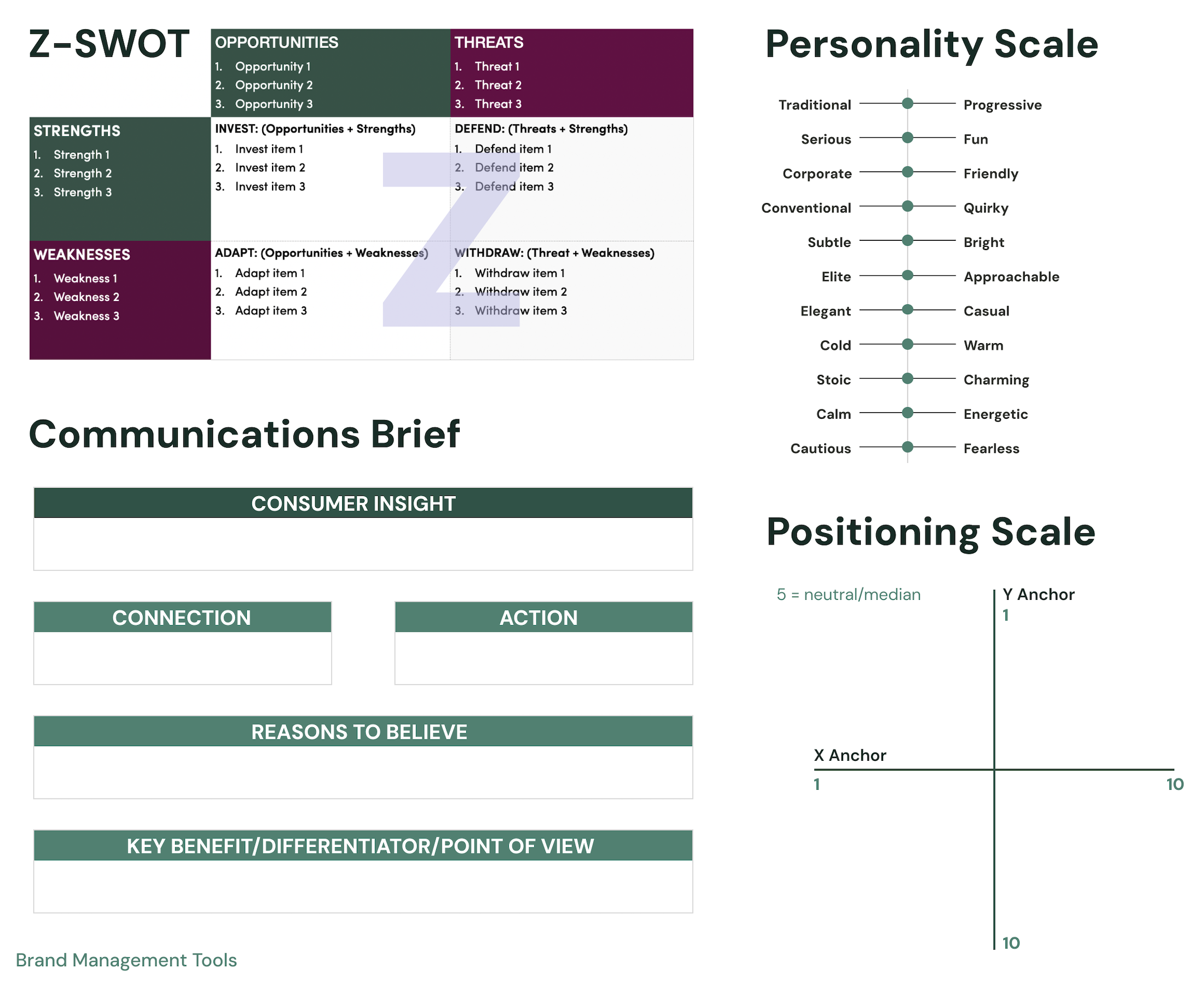11 September 2024
Part of me wanted to entitle this post “Branding is Ugly”, but research and data can be quite beautiful. Also, the collaboration and breakthrough moments involved are quite beautiful as well, so I decided against it for these nerdy reasons. Essentially, though, I’ve realized that the perception of branding is that it encompasses logos, colors, swag, and websites—lots of pretty things. I think this has to do with how we talk about it and what we show as proof of work completed—the tangible, tip of the iceberg deliverables.
But branding is more about the research and process that gets us to these highly visual, effective deliverables and the ongoing management that follows. It’s how we get to the criteria for how a brand should look and feel and establishes the metric against which to judge success against. It’s how we know what voice, tone, and personality to work within. It’s how we know what the goals, purpose, and values are, and who exactly we are doing it all for. It’s how we define an audience, understand their needs, and match them with business goals.

Brand management typically includes the following stages: planning, strategy, purpose, positioning, activation, and measurement. Without these, marketing campaigns will be ineffective, inconsistent, and an overall poor investment. Without branding, design will lack parameters and not resonate with the intended audience, actively working against the intended messaging. From my experience, clients can initially feel overwhelmed when I share this insight after they come to me looking for a new visual identity. Once I explain the importance and benefits of having a solid brand foundation and a clear path to how we will achieve it together, the prospect becomes much clearer, bringing relief and excitement.
Some of the behind-the-scenes research aid tools I often use throughout this process include a Z-SWOT analysis, positioning map, personality scale, and activation evaluations.
A Z-SWOT is a much more action-focused take on a traditional SWOT analysis since it provides a clear way to define priorities by following the Z pattern—it eliminates the “OK, now what?” visceral reaction to a completed SWOT table.
Here are some standard questions I ask to get started with completing this table:
From here, follow the Z to prioritize action items: invest, defend, adapt, withdraw.
This was one of the more challenging ones for me to wrap my head around, but once it clicks it becomes invaluable. A positioning map is a visual representation of brands within a market related to brand attributes that drive purchases.
After defining a brand’s primary and secondary attributes through a combination of qualitative and quantitative research, we identify which dimensions to measure on our X and Y axes. A rating scale is then defined along each and we can rate our brand and competitors, plotting them on the map to see where we exist among them based on these critical attributes. Strategizing becomes much more straightforward based on whether this positioning is the desired or necessary one.
This is such a seemingly simple approach that is very effective, especially when there are multiple stakeholder opinions to consider. Much of a brand’s personality can be encompassed within these listed traits. Once finalized, it can be shared with stakeholders to help drive design and content decisions—a high-level, visual summary that’s easy to absorb.
While in most cases brands tend to be all on a single side with these traits, I’ve definitely worked with brands that seemingly have contradicting results, such as being both very friendly and very elegant. In these situations, it’s important to dig deeper into goals and what these words mean specifically to the client. For instance, something similar happened with The Hand Foundation during this initial discovery process. Through additional communication, we determined that we could hit this established mark with a clean but colorful design, down-to-earth copy, and emphasizing the love of the Hand family with a look into their personal and professional lives.
Communication briefs and evaluations come into play once the brand is active and engaging in marketing campaigns. I find that it is too easy to get caught up in the excitement of these creative pursuits, and these tools help ensure these ideas make sense for the brand’s goals, are as effective as possible, and have everyone’s sign-off. They organize and summarize essential thoughts and intentions around planned communication in a straightforward manner.
These start by speaking to an uncovered consumer insight regarding what drives them and what problem may be presenting itself based on this motivation. From there, you’d break down the proposed piece of communication by speaking to what connection it is making with the consumer, the action it is asking of them, why they should believe the messaging, and finally, the key benefits of doing so.
I find these helpful in ensuring clear communication goals and as an aid in gaining stakeholder buy-in.
So, branding is ultimately heavier on the research side of things which then helps drive design and marketing by establishing a solid base of guidelines to work from, ensuring content and the overall experience of interacting with the brand is consistent and effective. It's incredibly powerful to be able to perfectly craft how someone feels and what actions they'll take when interacting with a brand at every touchpoint. I work with friendly companies and organizations that don’t exploit this power through deceptive patterns.
I’ve created a questionnaire for clients that gathers the information necessary to begin this critical discovery phase and define these essential brand elements that then shape the other especially fun stuff. If you’d like to partner up on getting your brand up and running or evaluating and adjusting an existing one, let’s get on a call or you can email me at hello@jonitrythall.com—I can’t wait.